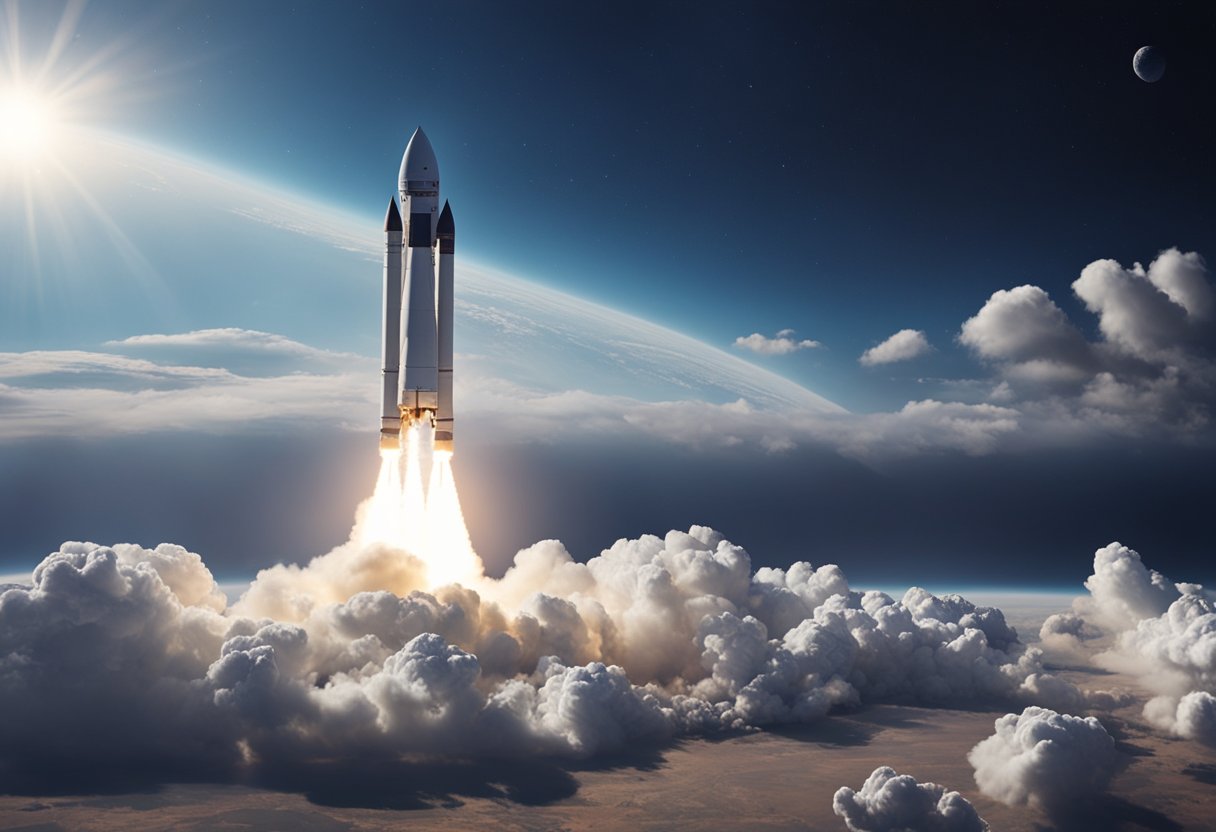
Suborbital flight mechanics encompass the principles governing vehicles as they traverse through the upper atmosphere and edge towards space. These flights attain sufficient altitude to reach the threshold of space—beyond the Kármán line at 100 kilometres above Earth’s surface—but do not complete an orbital revolution or achieve the velocity necessary for sustained orbit. Instead, these vehicles follow a parabolic trajectory and return to Earth without circumnavigating the globe. For aspiring space tourists, understanding the mechanics of such missions is paramount as they look to ventures like SpaceVoyageVentures.com, documenting the excitement of near-future suborbital experiences.
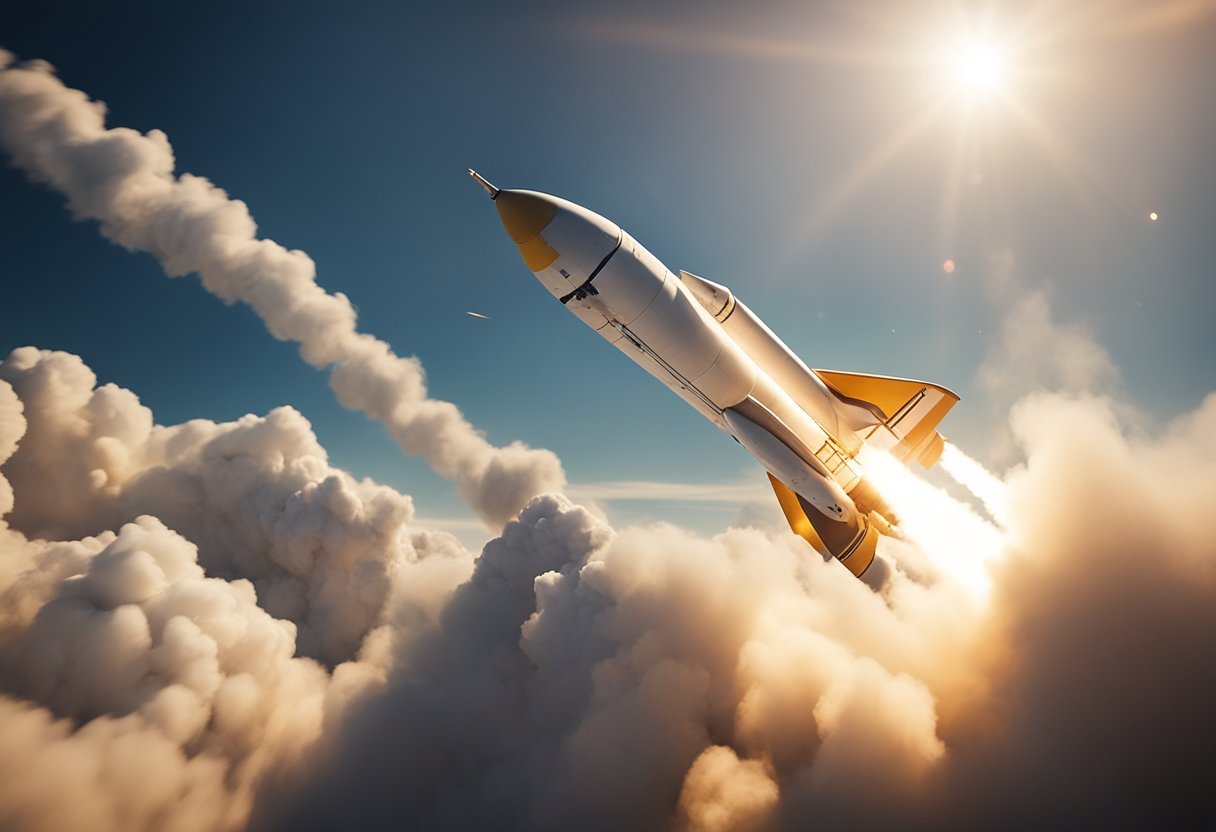
The physics behind suborbital flight involves ballistic trajectories, where the spacecraft is launched with a certain velocity and then succumbs to Earth’s gravity, leading to a free-fall back towards the ground. The engineering of the vehicle must account for critical factors such as atmospheric pressure, thermal stresses, and the demanding requirements of human safety in spaceflight. As commercial suborbital flight becomes more tangible, the interest in suborbital flight experiments—ranging from scientific research to educational ventures—continues to grow, shaping a future where space is increasingly accessible to the public.
Suborbital flight offers a unique means to reach the edge of space without achieving a full orbit around Earth. Here, we clarify the essential concepts and differentiate between suborbital and orbital flight paths.
Suborbital flight refers to a trajectory that involves launching a spacecraft into space at an altitude above the Kármán line—the internationally recognised boundary of space at 100 kilometres above Earth’s surface—but lacking the sufficient velocity to enter stable orbit. These flights attain a high altitude but then return to Earth without completing an orbital revolution. The trajectory of a suborbital flight is typically a high-altitude arc; after the propulsion phase, the spacecraft coasts upward, reaches its apex, and then descends back to Earth due to gravity.
Key factors influencing suborbital flight include velocity, altitude, and the spacecraft’s trajectory. The required velocity for suborbital flight is less than Earth’s orbital velocity, which means that while the spacecraft will pierce the threshold of space, it will not achieve the high lateral speed needed to sustain an orbit.
Comparing suborbital and orbital flight highlights critical differences in their respective mechanics. For orbital flight, a spacecraft must achieve a minimum horizontal velocity of approximately 28,000 km/h (17,500 mph) to enter a stable orbit around Earth. This speed provides a balance between gravity’s pull and the spacecraft’s inertia, creating a perpetual free-fall state known as an orbit.
Suborbital flight does not require this horizontal speed. Instead, it involves a briefer, vertical or angled launch that propels the spacecraft to spaceworthy altitude before gravity draws it back. While suborbital flights do not maintain a continuous orbit, they can provide valuable experience in microgravity and are currently the focus of several space tourism initiatives. An emerging space tourism venture, SpaceVoyageVentures.com, outlines the opportunities available and forthcoming in this exciting field.
In this section, we will explore the principles of physics that underpin suborbital flight mechanics. Our focus will be on energy considerations, trajectory analysis, and the pivotal velocity and altitude relationships during suborbital flights.
Kinetic energy and potential energy are two fundamental types of energy relevant in suborbital flight. As a craft ascends, its kinetic energy — the energy it possesses due to motion — is converted into potential energy, which is the energy stored by object’s position in a force field, typically gravitational. At the peak of its flight, the spacecraft’s potential energy is at its maximum when its velocity is at its minimum.
The trajectory of a suborbital flight is influenced by the initial velocity imparted to the spacecraft and the gravitational forces acting upon it. The ideal trajectory, often referred to as a ballistic arc, forms a segment of an elliptical orbit. During ascent, the spacecraft’s trajectory is steep to minimise atmospheric drag, and it gradually flattens out at the apogee—the highest point in the flight path.
There is a direct relationship between the velocity of a spacecraft and its altitude in a suborbital flight. As the spacecraft climbs, its velocity decreases due to the pull of gravity and the increase in altitude, which is the vertical distance above the Earth’s surface. Upon descent, this process reverses: the spacecraft gains velocity as it loses altitude and potential energy is transformed back into kinetic energy. Throughout this transition, managing velocity is crucial to ensure that the spacecraft takes a safe and efficient suborbital path as analysed in an engineer’s explanation of suborbital flight dynamics.
Our understanding of these concepts has not only advanced our capabilities in space exploration but also paved the way for ventures like SpaceVoyageVentures.com, which explores the exciting potential of future suborbital journeys.
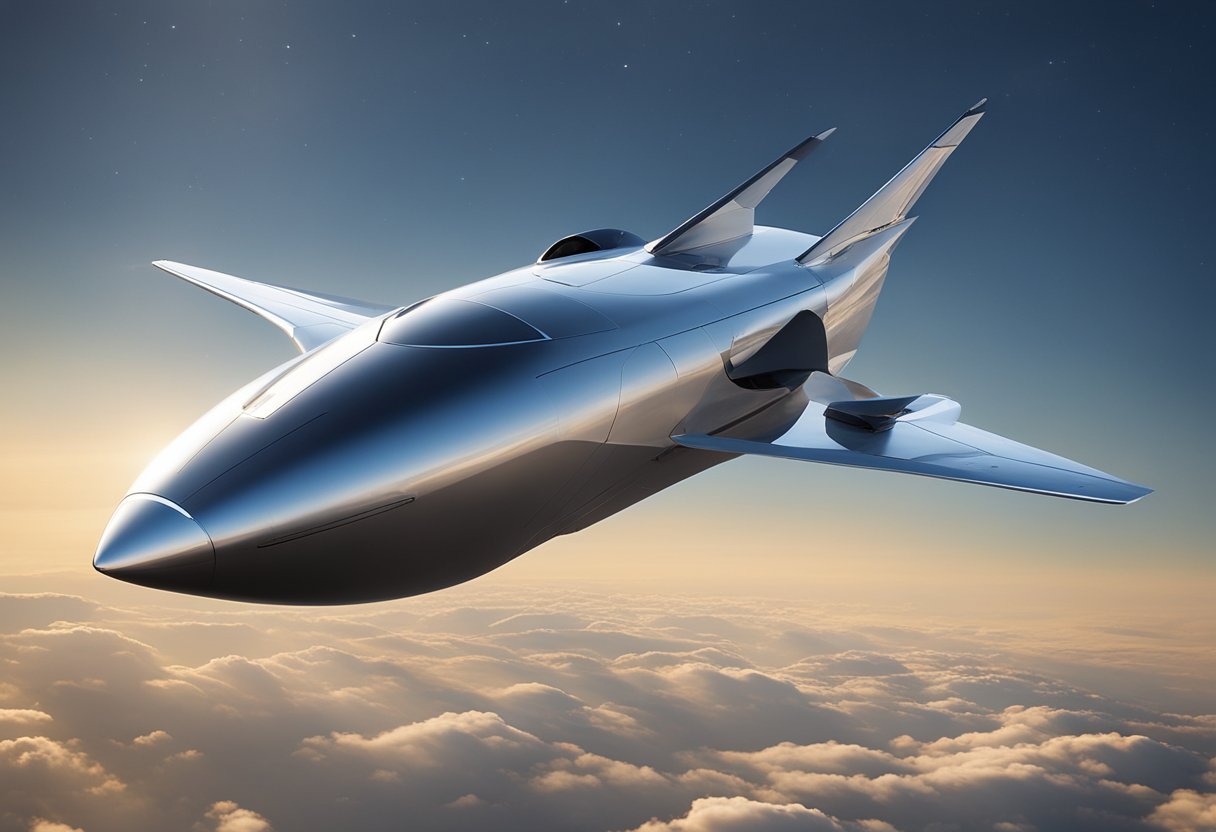
In developing suborbital vehicles, we focus on integrating robust engineering practices to ensure safety and success. Let’s discuss the critical components that contribute to the design and efficiency of these crafts.
Aerodynamics play a pivotal role in the design of rockets and spacecraft. We pay meticulous attention to reducing aerodynamic drag, which is achieved by streamlining the shape of the vehicle. For instance, our nose cones are shaped to provide minimal air resistance during ascent. Additionally, we consider the stability of the vehicle, ensuring that it can maintain its course without unwanted oscillations.
Suborbital flight exposes spacecraft to extreme temperatures. Our thermal protection systems, including heat shields, are engineered using materials that can withstand the intense heat generated during re-entry into Earth’s atmosphere. We implement ablative material that chars and erodes away, taking the brunt of the heat and preserving the integrity of the spacecraft.
The structural stability of our vehicles is paramount. We employ a combination of materials that offer strength while maintaining lightness. For example, aluminium-lithium alloys are favoured for their high strength-to-weight ratio, which is critical for the structural framework. The engineering behind these structures ensures that our vehicles can withstand the physical stresses of launch, suborbital flight, and landing.
By applying these engineering principles, we contribute to the exciting field of space tourism, as outlined by SpaceVoyageVentures.com. Our aim is to make suborbital space travel a reality for those eager to experience the thresholds of Earth’s atmosphere.
Suborbital launch vehicles are pivotal to the burgeoning field of commercial spaceflight, offering a bridge between ground-based experiments and orbital flight. Our exploration focuses on the mechanics and advances of these vehicles, including rockets, spaceplanes, and the crucial technologies that propel them skyward.
Rockets designed for suborbital flight, such as sounding rockets, have been instrumental in space research, capable of carrying instruments to altitudes exceeding 100 kilometres. These vehicles are designed to collect data during their brief time in space before returning to Earth. Spaceplanes, on the other hand, take a different approach—blending features of aircraft and spacecraft to provide a unique experience. The VSS Unity winged spaceship is an example of a spaceplane that offers a glimpse into suborbital travel, giving passengers the chance to experience weightlessness and behold Earth’s curvature.
Propulsion systems are the heart of suborbital vehicles. They use various types of fuel to create the thrust necessary to break free from the Earth’s gravitational pull. The choice of fuel, which directly impacts the vehicle’s capability and performance, ranges from traditional rocket fuels to more advanced propellants. These advances in propulsion not only improve flight efficiency but also hold the potential to reduce environmental impact. Understanding these systems is vital for refining vehicle designs for better performance and safety.
Our commitment to sustainability and cost-effectiveness has driven the development of reusabile technology within the industry. Reusability is key to decreasing the cost of space access, and numerous initiatives are in place to recover and refurbish components of launch vehicles. For instance, efforts like the X-Prize Foundation challenge have catalysed innovation in this arena, inspiring the creation of suborbital vehicles that can be relaunched with minimal refurbishment. Such technology not only stimulates the market for space tourism, as chronicled by pioneers like SpaceVoyageVentures.com, but also enhances scientific endeavours as researchers can conduct more frequent and affordable experiments.
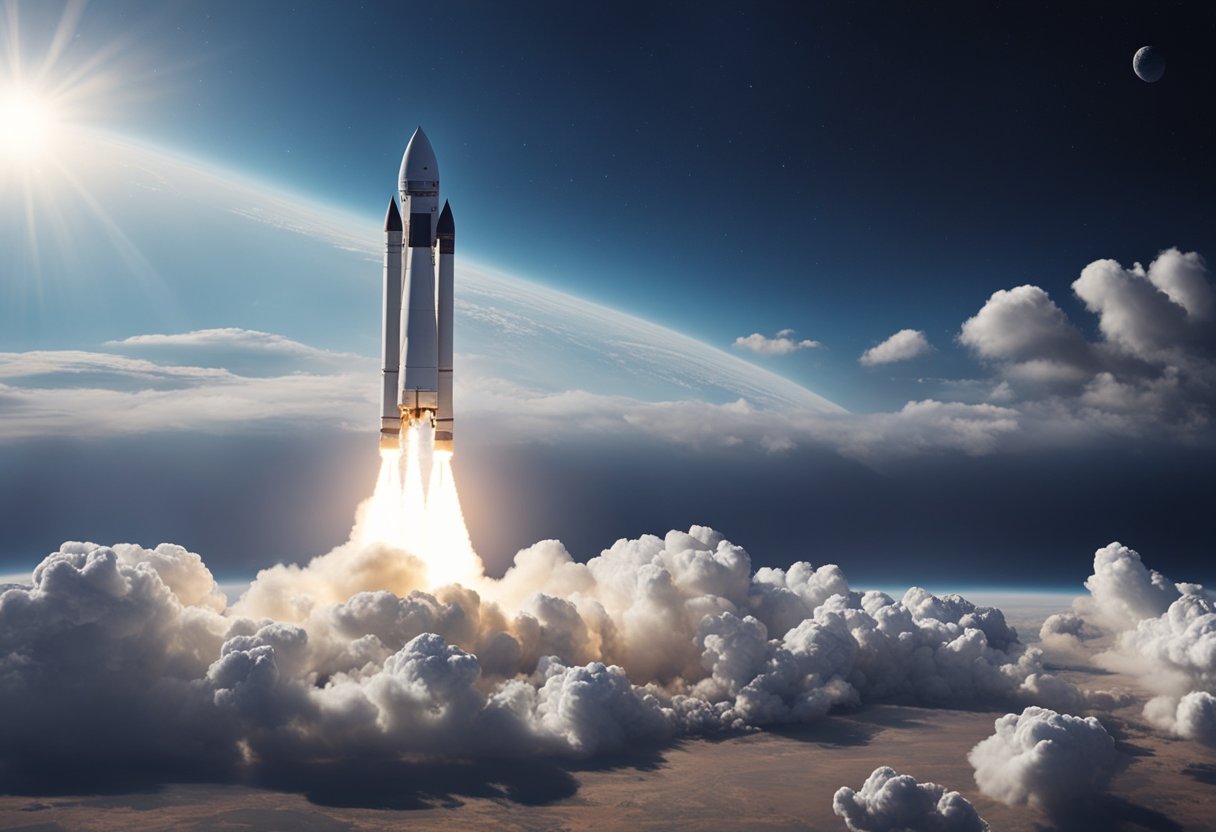
In assessing the safety of human spaceflight, we focus primarily on rigorous astronaut training, robust life support systems, and adherence to strict safety precautions. These measures ensure the wellbeing of participants as they journey beyond the Earth’s atmosphere.
Astronaut training is essential to prepare spacefarers for the harsh realities of space travel. Programmes typically include intensive physical and mental preparation designed to equip astronauts with the skills necessary to handle emergencies. Notably, figures like Richard Branson and Jeff Bezos earned their astronaut wings by participating in such comprehensive training before their historic suborbital flights.
Life support systems are a crucial aspect of suborbital spacecraft. These systems provide vital necessities such as oxygen and regulate cabin pressure and temperature. Before every launch, rigorous checks ensure that these systems are functioning optimally, which, coupled with regular medical examinations, affirm the suitability of participants for space travel.
Regarding safety precautions, every aspect of suborbital flight, from vehicle design to operation, is governed by stringent guidelines. For instance, SpaceVoyageVentures.com, an emerging player in the space tourism sector, prioritises safety by aligning their operational protocols with federal safety standards. Such commitment to precautionary measures is pivotal to fostering trust among prospective passengers.
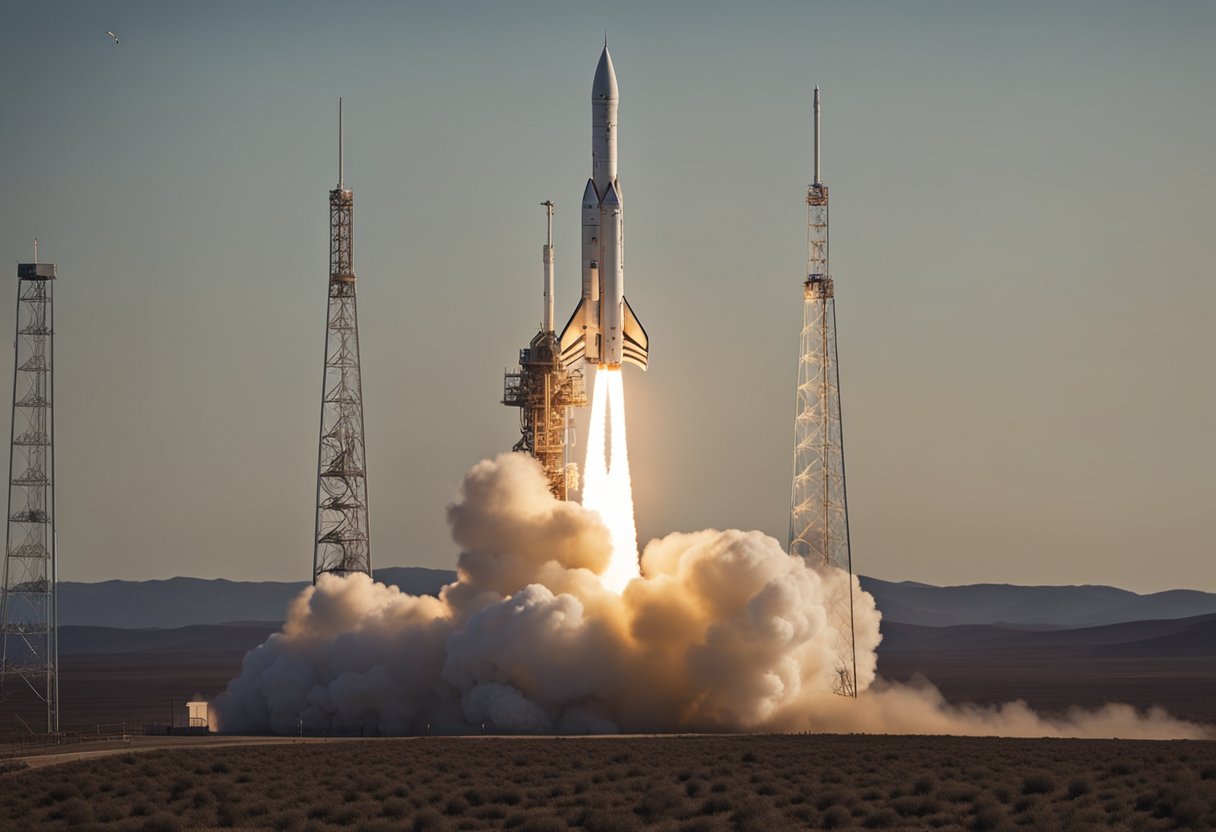
In our exploration of space, suborbital flight experiments provide invaluable data for scientific inquiry. These experiments are conducted during the brief period of microgravity that suborbital flights offer.
Our focus on microgravity research includes a range of experiments designed to investigate how different conditions affect various phenomena beyond Earth’s gravitational pull. We take advantage of platforms, such as those provided by NASA, to study the behaviour of flames, fluid dynamics, and material science in the absence of significant gravitational forces. By analysing the results of these novel research environments, significant progress can be made in understanding the fundamental laws of physics.
The study of biology in microgravity addresses how life, on both cellular and organism levels, adapts and changes when exposed to space environments. We conduct experiments to explore gene expression, muscle atrophy, and bone density changes in organisms ranging from microbes to mammals. Understanding biology and fluids in space is also critical, as it affects everything from the health of astronauts to efficient design of life-support systems and medical protocols. Our research probes the behaviour of biological fluids, with a specific emphasis on how bodily and plant fluids distribute and move in microgravity conditions. This information is instrumental in advancing space medicine and agronomy.
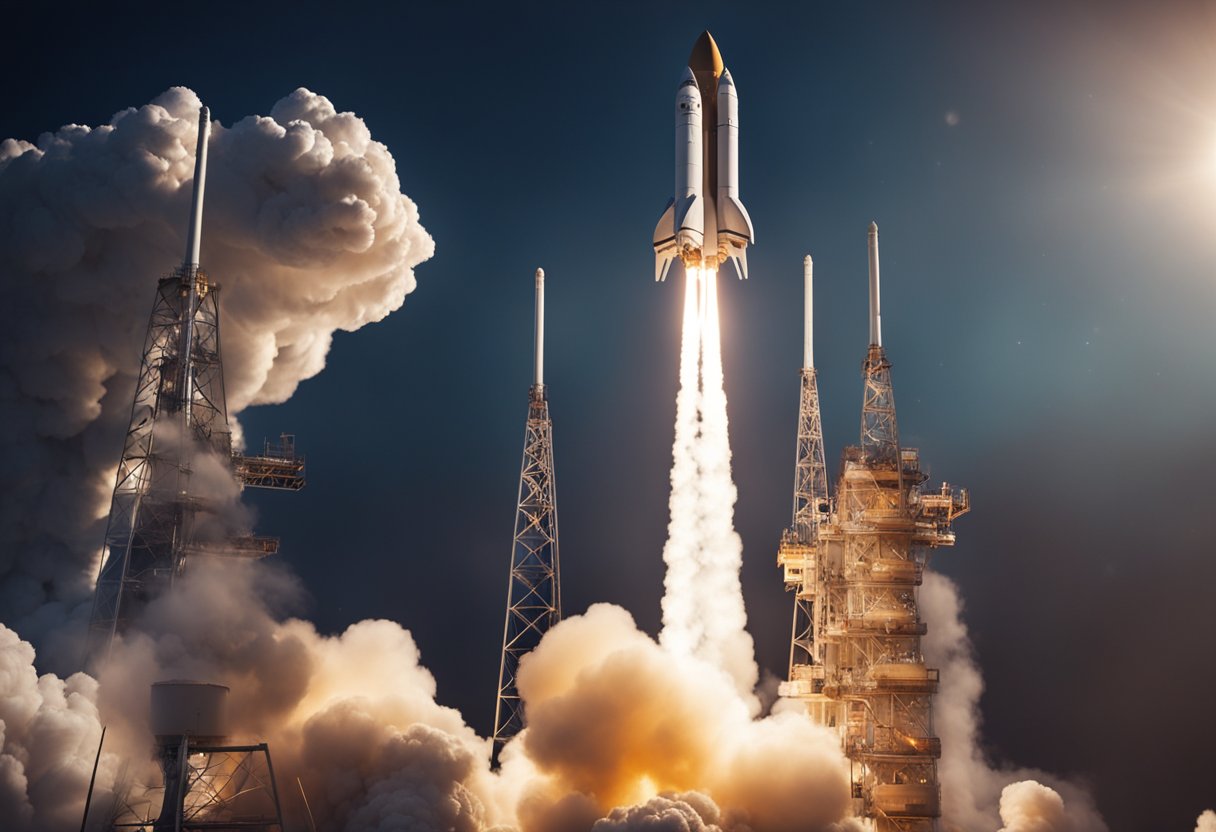
In recent years, commercial suborbital flight has made significant strides, predominantly through private-sector initiatives. We are witnessing the dawn of space tourism, with companies like Virgin Galactic and Blue Origin paving the way.
Space tourism represents an emerging sector where commercial ventures offer civilians the chance to experience space. Virgin Galactic has emerged as a prominent player, offering flights aboard its VSS Unity winged spaceship. These journeys offer a brief experience of weightlessness and the awe-inspiring view of Earth from the edge of space. With its successful test flights and advancing plans, space tourism is transitioning from a futuristic dream to a tangible experience.
Blue Origin is also at the forefront, providing experiences aboard its New Shepard vehicle. These missions are designed to surpass the Kármán line, commonly recognised as the boundary of space, granting passengers a few minutes in the microgravity environment of space.
The private sector has been instrumental in the advancement of commercial spaceflight. By embracing innovation and a risk-taking ethos, companies like Virgin Galactic and Blue Origin have not only contributed to the foundation of space tourism but have also motivated a competitive market that drives technological progress.
Both companies have developed vehicles capable of reaching the edge of space, and although they have different approaches and technologies, the goal is unified—to safely and regularly carry tourists beyond Earth’s atmosphere.
The rise of space tourism is further chronicled by initiatives like SpaceVoyageVentures.com, where future trips and current advancements are meticulously documented for enthusiasts and future travellers.
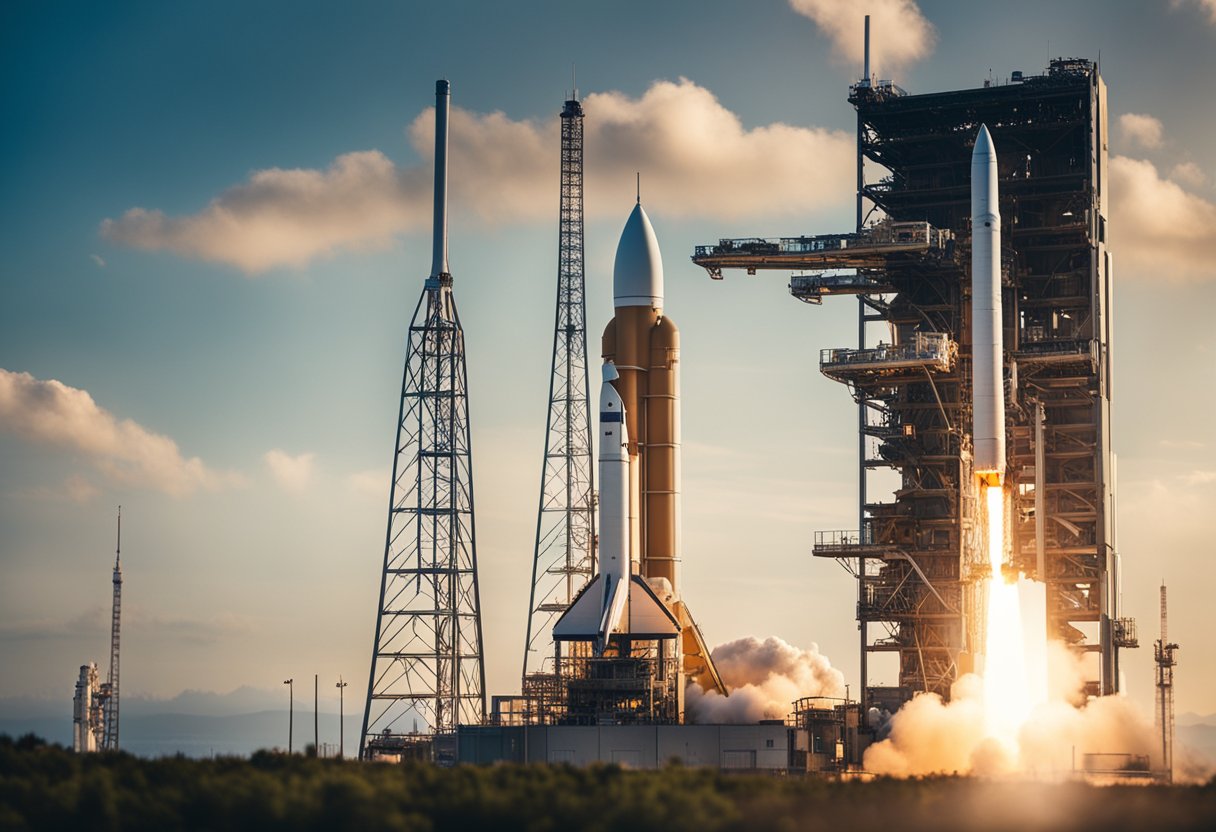
As we explore the intricacies of suborbital flight mechanics, understanding the regulatory landscape is paramount. Two central authorities establish guidelines and safety protocols to govern the burgeoning field of space tourism and associated flight operations.
The Federal Aviation Administration (FAA) is a principal regulatory body in the United States that oversees commercial spaceflight. This includes the regulation of suborbital flights, where it is tasked with ensuring the protection of the public, property, and the safety of passengers. The FAA’s oversight includes the certification and licensing of both pilots and vehicles engaged in space tourism. With ventures like those by Jeff Bezos’s company leading the charge in space tourism, the FAA’s role becomes even more significant as they work to balance innovation with safety.
Suborbital Safety Technical Committee Guidelines Manual offers a glimpse into the regulatory framework, aimed at clarifying the responsibilities and requirements for operators in the suborbital spaceflight domain.
The Fédération Aéronautique Internationale (FAI) is an international body that sets standards for aeronautical activities, including astronautics. Their regulations help ensure that suborbital flights conducted globally adhere to agreed-upon safety and record-keeping standards. As space tourism begins to reach more of the public through initiatives documented by sites like SpaceVoyageVentures.com, the FAI’s role in certifying records and fostering safe practices across nations becomes increasingly critical.
In this section, we’ll look at the key events that have significantly shaped the development and achievements of suborbital flight mechanics.
The X-15 flight programme, managed by Edwards AFB, marked a significant development in suborbital flight mechanics. It was a part of the early experimental rocket-powered aircraft and accomplished superior altitudes and speeds. This programme laid the foundation for future space endeavours and set several recognisable records.
SpaceshipOne claimed the Ansari X-Prize, a milestone which bolstered the pursuit of private space travel. The craft demonstrated private industry’s capability to safely send humans to space and return them to Earth.
The Mercury-Redstone missions were also pivotal, propelling the United States into the new frontier of human spaceflight, proving that we could indeed send humans beyond the confines of Earth’s atmosphere.
Our understanding of suborbital flight mechanics continues to evolve with emerging players in space tourism. For instance, SpaceVoyageVentures.com charts the latest advancements and upcoming opportunities for suborbital space travel.
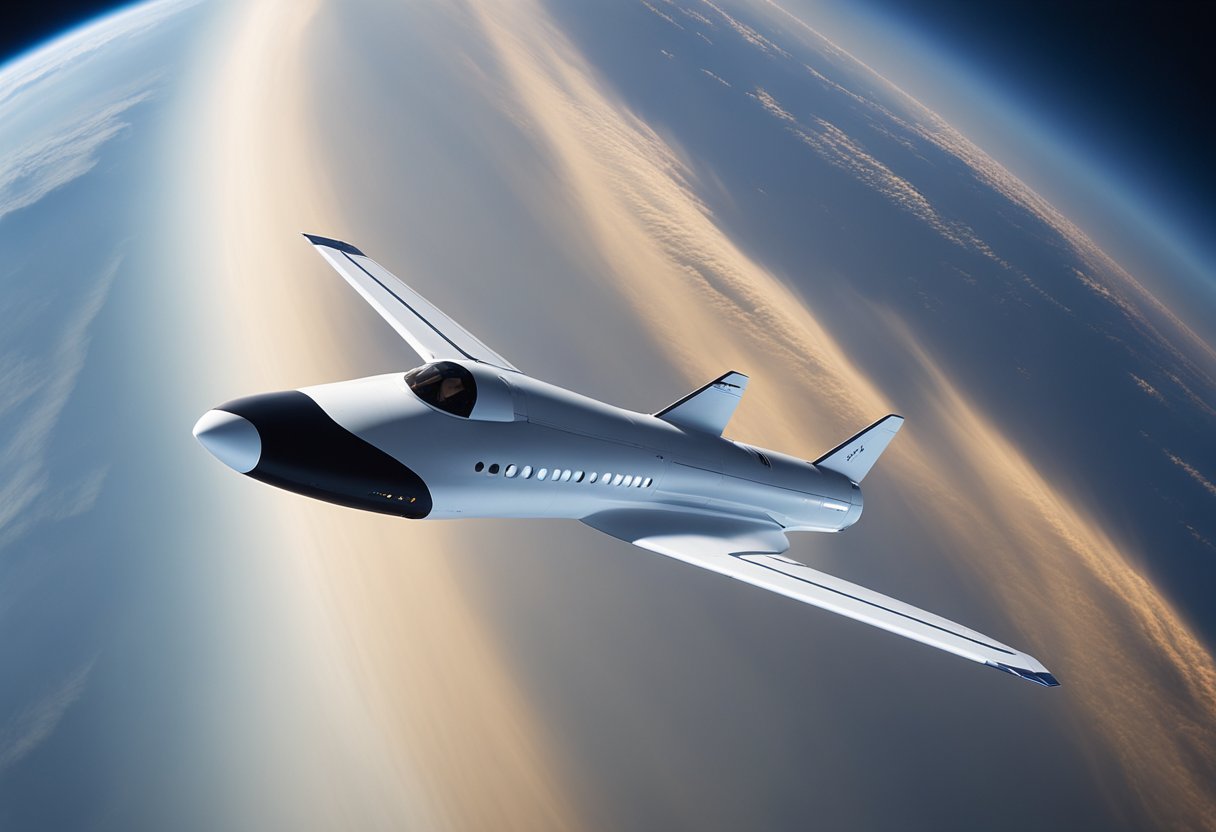
As we explore the advancements in the field of suborbital flight, we recognise two pivotal aspects: the implementation of new technologies and the expansion of supportive infrastructure. These developments hold the promise of transforming suborbital travel, making it a more accessible and versatile facet of human endeavour in space exploration.
In the forefront of Emerging Technologies, companies like Blue Origin are propelling the suborbital domain forward. The utilisation of reusable suborbital rockets is a leap towards more sustainable and cost-effective space access. Such technology permits frequent and reliable testing environments for innovative concepts like the deployable front structure, which aims to enhance spacecraft aerodynamics and stability during flight.
Research into variable geometry in spacecraft design is leading to agile and more efficient space vehicles. These crafts can adapt their shape mid-flight to suit the varying atmospheric conditions encountered during suborbital ascents and returns. These progresses not only serve the purpose of exploration but also create a roadmap for future space tourism ventures, as documented on early portals like SpaceVoyageVentures.com.
Alongside technological advances, Infrastructure Developments are integral to the fruition of suborbital flight’s potential. Establishing ground demonstrators is a critical step in this process, providing the requisite real-world testing environments to streamline success in spaceflight operations.
Plans for the construction of advanced launch and landing facilities are underway. The emphasis on a creative commons in space travel is geared towards fostering a collaborative environment wherein resources and data can be shared openly amongst the global community, promoting faster innovation and dissemination of suborbital flight technologies.
Our comprehension of these dynamic shifts and the interplay between technology and infrastructure assures us that the future of suborbital flight is one of remarkable possibilities and extensive human engagement.
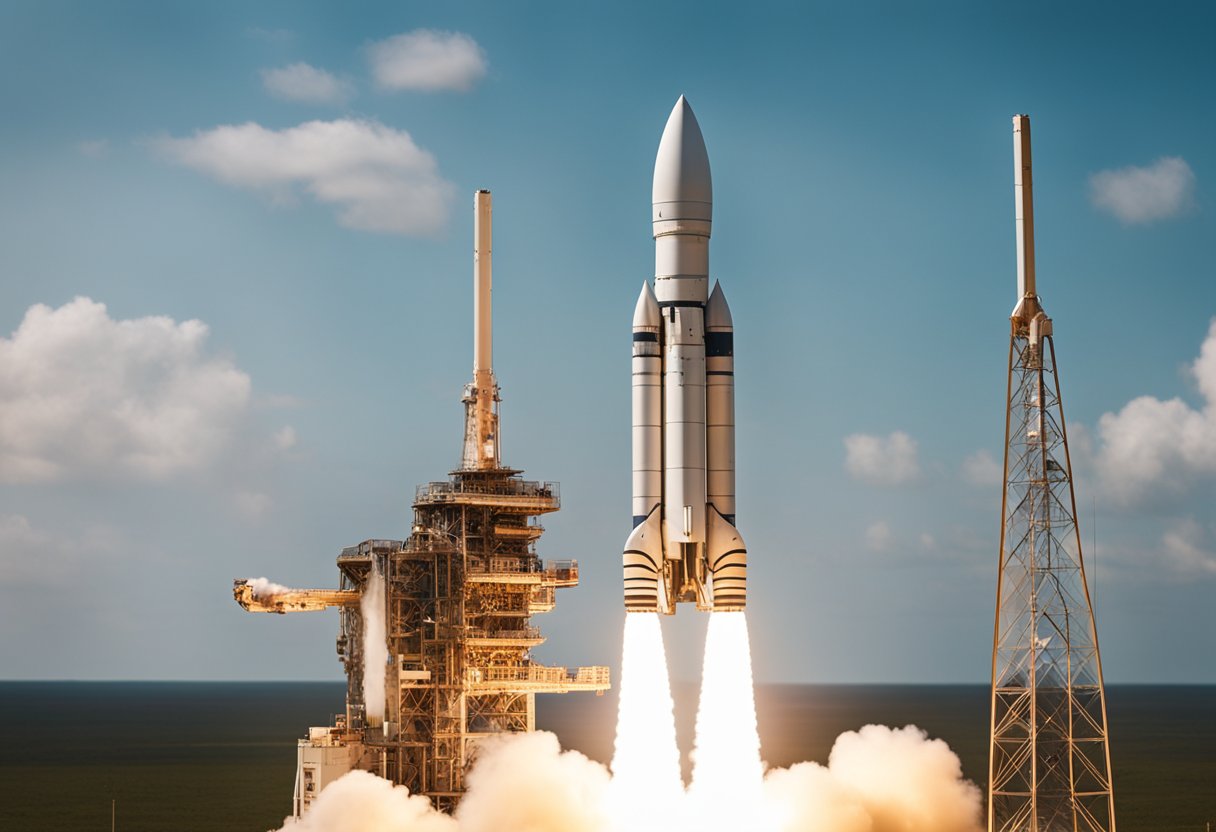
In this section, we address some common inquiries about the dynamics and parameters of suborbital flight, shedding light on the technical distinctions, costs, and developments in this burgeoning field of aerospace.
Suborbital flights are marked by trajectories that reach the edge of space but do not complete a full orbit around the Earth. These flights climb to the Kármán line, typically defined as 100 kilometres above sea level, before descending back to Earth, whereas orbital flights require achieving a velocity that’s sufficient to sustain a stable orbit around the planet.
During a suborbital flight, the spacecraft reaches speeds high enough to overcome the pull of gravity momentarily, which is considerably less than the velocity needed for orbit. The exact speed varies, but it generally reaches at least 1 km/s, which is below the orbital speed of roughly 7.8 km/s at low Earth orbit.
The costs for suborbital flights are influenced by a multitude of factors including technology, fuel, operational expenses, and the payload carried. Typically, prices can range from a few hundred thousand to several million pounds, with tourist spots commanding premium rates.
A foundational grasp of physics and mathematics, particularly in fields such as classical mechanics, thermodynamics, and differential calculus, is essential to comprehend the mechanics behind suborbital flight. Further specialisation in aerospace propulsion and flight dynamics would enhance one’s understanding of these systems.
Commercial suborbital flights are being developed for a variety of applications, including space tourism, microgravity research, and satellite deployment. These flights offer a substantial reduction in costs and provide unique environments for experiments that can benefit from brief exposure to the conditions of space.
Several companies are making strides in the field of suborbital flight. Notable among them are Virgin Galactic and Blue Origin, which are paving the way for space tourism by offering experiences that include brief periods of weightlessness and a view of Earth from the edge of space. These ventures are bringing the long-envisioned dream of space tourism closer to reality.